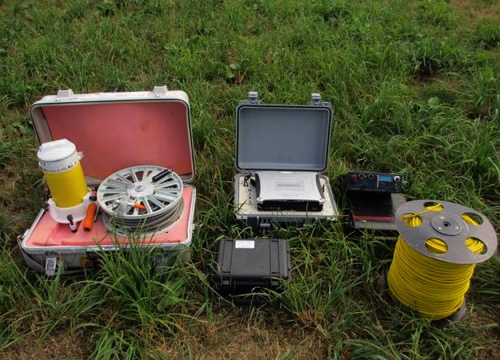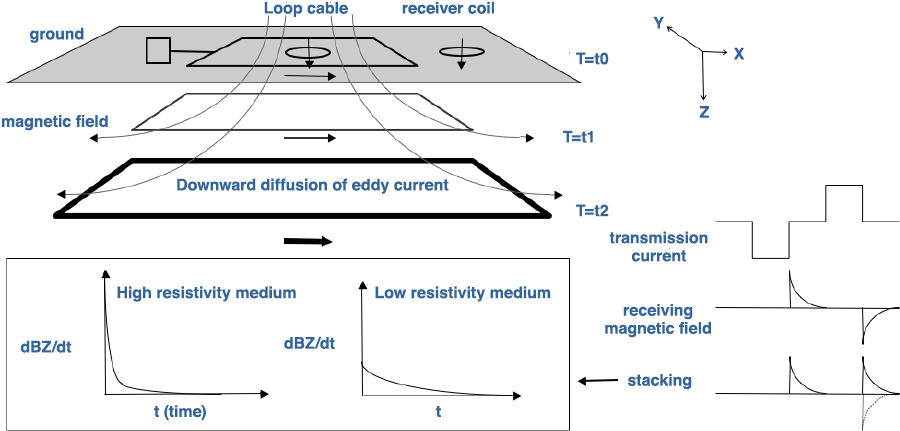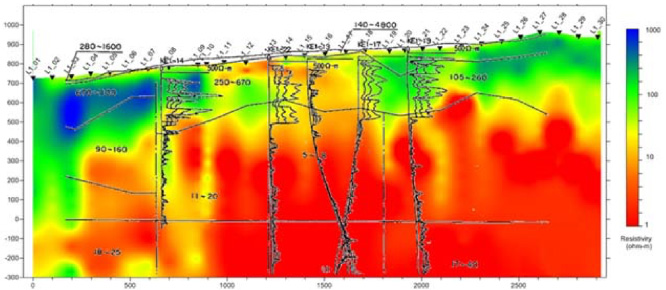Geophysical Services
Electromagnetic Surveys
Transient Electromagnetic Method (TEM)
The Transient Electromagnetic Method (TEM) is a geophysical approach to obtaining underground electrical properties that is widely used around the world. It is also known as time-domain electromagnetic (TDEM) exploration.
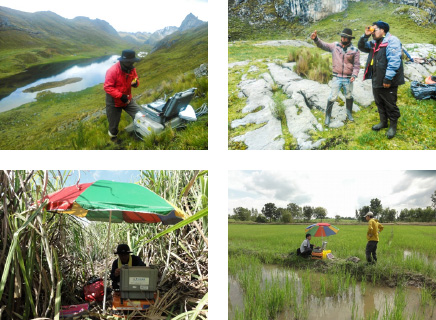
The following are typical sounding styles, central induction and ground wired measurement configurations.
Central loop sounding configuration
The easy-to-use central loop sounding configuration is one of the many applications for measurement configurations in the TEM method. In this configuration, transmitter current is energized into a loop cable on the ground to generate an artificial magnetic field. The transmitter current is then switched off and the primary magnetic field immediately falls to zero. This sudden change in magnetic field induces a secondary electric current in the ground. The secondary current acts to oppose the decrease in the primary magnetic field. The secondary current distribution can be approximated as a horizontal loop of current and generates a secondary magnetic field. Over time, the secondary electric currents spread out (diffuse) in a pattern that is similar to a smoke ring. The secondary currents move deeper as time increases, thus giving information about progressively deeper structures. Initially, the magnetic field is oriented downwards. In the TEM method we observe the decay of the magnetic field over time using coil sensors and other equipment.
In a conductive medium the decay will be relatively slow, and in a resistive medium the decay will be relatively fast. The transient decay of the magnetic field is used to estimate resistivity structures.
Applications
This type of configuration is used for relatively shallow targets in mineral, underground and civil engineering exploration.
Grounded wire sounding configuration
For deep exploration, the eddy current must reach deeper targets, and the transmitter moment should be larger. The grounded wire sounding configuration is relatively easy way to increase the transmitter moment, namely current multiplied by wire length. This configuration is also referred to as Long Offset TEM, or LOTEM. Survey points are set away from the line source and the transient decay of the magnetic field that occurs after shutting off the transmitter current is observed.
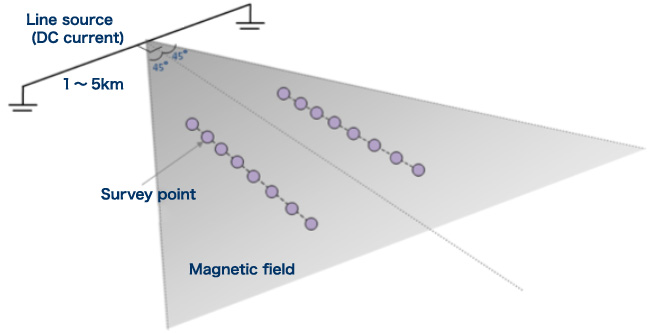
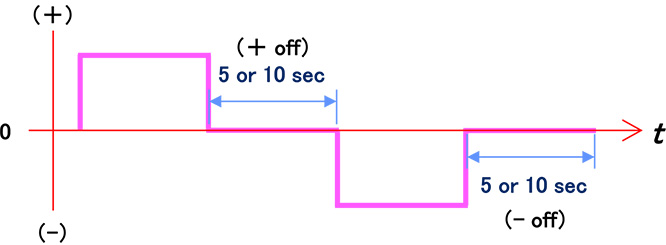
(one cycle)
Applications
The sounding depths of LOTEM depend on the transmitter moment, that is, the current multiplied by wire length. MINDECO’s system focuses on deep targets in geothermal, oil and gas exploration, and monitoring of water flooding of oil reservoirs.
SQUITEM System and Surveys
JOGMEC* has developed High Temperature Superconducting Quantum Inference Device (HTS- SQUID) sensor systems for TEM prospecting.
SQUITEM is a Transient Electromagnetic Method system using HTS-SQUID sensors which directly observe changes in transient magnetic flux densities that occur after shutting off the transmitted current. In this system, the sounding depth is larger than with other coil sensor systems.
* JOGMEC: Japan Organization for Metals and Energy Security
